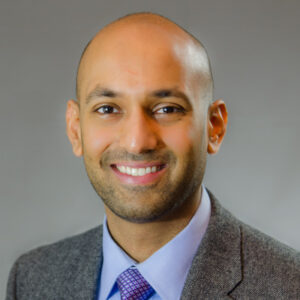ONLINE EXCLUSIVE
Cataract
May 2023
by Liz Hillman
Editorial Co-Director
Immediately sequential bilateral cataract surgery (ISBCS) has been gaining steam, both in discussion and in practice, but as the authors of a recent Journal of Cataract & Refractive Surgery paper point out, it “remains a subject of controversy in ophthalmology.”1
The authors of the paper discussed both the hesitancy for ISBCS adoption and some of the appeal, noting that there are few studies that look at patient perception between ISBCS and delayed sequential bilateral cataract surgery (DSBCS), the latter of which is most common in the U.S.
“These results suggest that patients who had ISBCS reported less visual impairment than those who had DSBCS and achieved better patient-reported visual functioning in their daily activities in the early postoperative period.”
Arsenault et al.
The authors performed a prospective observational cohort study at Laval University in Quebec City, Canada, where patients were given the Catquest-9SF questionnaire the day of surgery for ISBCS and the day of first eye surgery for DSBCS. The questionnaire was given again 1 month postop for ISBCS and 1 month postop for both eyes in DSBCS. A total of 186 patients were included (152 who had ISBCS and 34 who had DSBCS).
The investigators reported that the questionnaire scores for ISBCS patients at 1 month postop were significantly lower than those of DSBCS patients 1 month postop for their first eye. The patients in the ISBCS group had better scores for reading things like newspaper text or text on a television and doing things like seeing well enough to walk on uneven ground. However, 1 month after the DSBCS patients had their second eye surgery, similar scores were achieved on the questionnaire between the two groups.
“These results suggest that patients who had ISBCS reported less visual impairment than those who had DSBCS and achieved better patient-reported visual functioning in their daily activities in the early postoperative period, although those benefits do not seem to persist after both eyes are operated on in the DSBCS group,” the authors wrote, adding later, “Although ISBCS and DSBCS allow similar final visual outcomes, the early postoperative visual functioning remains an important factor for the acceptability of ISBCS by practitioners and patients alike. The results of our study indicate that the patient-reported visual benefits can be achieved as early as 1 month postoperatively, and this may give a perspective regarding concerns for bilateral visual impairment in the early postoperative period after ISBCS.”
There was at least an anecdotal uptick in ISBCS as a result of the COVID-19 pandemic.
EyeWorld covered physician perspectives in this article. ISBCS and a proposed alternative payment model for it were also the topic of the ASCRS Government Relations Committee session held during the 2022 ASCRS Annual Meeting. During this session, physicians and experts discussed the evolution and benefits of ISBCS as well as the development of APMs. Here’s some of what EyeWorld reported on the topic at the time:
The ASCRS draft APM includes a bundled payment for same-day, bilateral cataract surgery to appropriate patients. The surgeon, anesthesiologist, and facility establish a Cataract Surgery Team that accepts a single, bundled payment, which is then divided among team members. The model includes a warranty for complications, whereby the payment covers the cost of surgery, including the anesthesia and facility fee, as well as complications that most commonly occur. Since the payment is fixed, Medicare will not pay more if complications occur, and profits would be higher for a surgery team with low complications. The model excludes services, such as postoperative medications, intraoperative medications, anything beyond 90 days, and non-ophthalmic services. This is limited to uncomplicated cataract surgery, 66984, and includes a limitation on financial risk. Surgeons who have low rates of post-surgical complications and good visual outcomes receive higher net payments than they currently receive, and if the model qualifies as an advanced alternative payment model, the team could receive a 5% bonus.
Reference
- Arsenault R, et al. Perception of visual outcomes in patients after delayed compared with immediately sequential bilateral cataract surgery. J Cataract Refract Surg. 2023;49:148–153.



